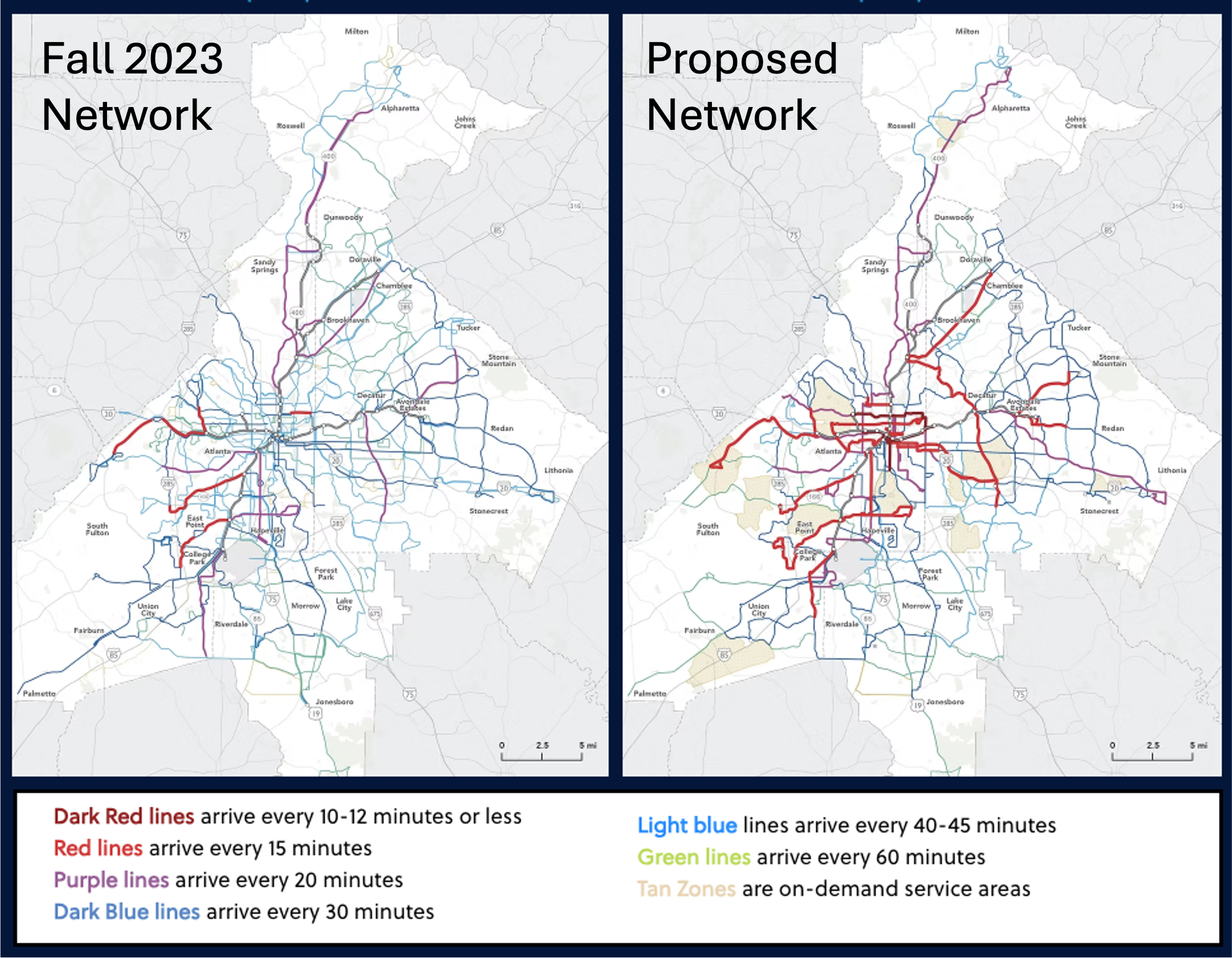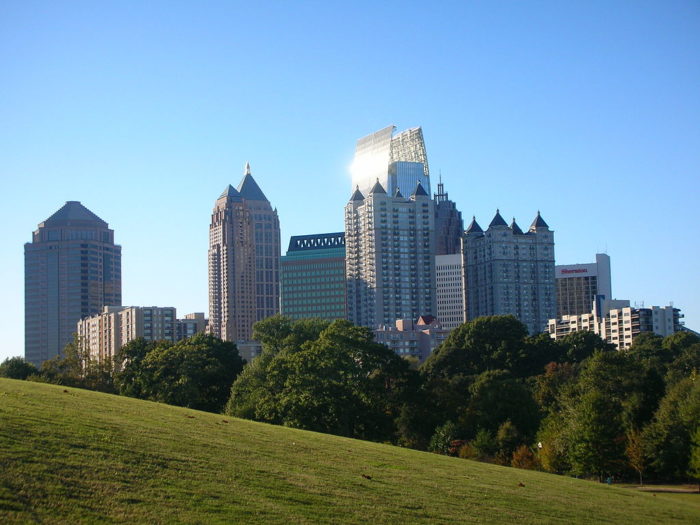After much hard work, intense discussions, extensive public outreach, and a pandemic, we’re finally ready for public comment on the draft MARTA “NextGen” bus network redesign, whjch covers Atlanta and the neighboring cities in Fulton and DeKalb Counties. (Clayton County is also part of MARTA but being addressed by a different process.)
The project website has all kinds of maps and useful information. But if you’re curious, I hope you will delve into our readable full report (download high resolution pdf, or view low resolution pdf). There you’ll find a complete explanation of the thinking that led to the proposal as it stands.
This is the first complete rethinking of the bus network since the MARTA rail system opened 45 years ago. Back then, the core idea of the network was that the purposes of buses was to feed the rail system, producing a network overwhelmingly suited to bringing people into downtown Atlanta. But since then, much has changed about the region and it transit demand:
- Many suburban employment and activity centers have developed, some of which are well suited to transit service.
- The rise of working from home after Covid-19 has reduced the downtown rush hour commute market.
- The need is greater than ever for all-day, all-week, all-direction trips that matter to lower income people. Many of these trips are not going downtown, but to activity and job destinations all over the region.
We have done our best to redesign the network reflecting these changes. Big ideas include:
- More lines that run frequently (every 15 minutes or better) all day and on weekends. These are in red on our maps below.
- More lines that continue past rail stations instead of ending at them, to connect more destinations with fewer transfers.
Is this all of the service that the service area needs? No, it is what MARTA can afford, given its other commitments and the decisions that have been made about priorities. MARTA directed us to plan for a total service budget that is slightly lower than 2019 though higher than 2023. I wish we could have proposed far more service than this.
Still, within these constraints, the plan achieves some dramatic improvements. Here is the Fall 2023 network on the left, which we used as a baseline, and the proposed “NextGen” network on the right. (These are just diagrams. Much more detailed maps are on the project website and in our report.)
Some key facts:
- The average number of jobs reachable in an hour goes up by 21% for all residents, 23% for racial minority residents, and 23% for low income residents. (Why does this matter?)
- The number of residents within 1/4 mile of service goes up by 2%.
- The number of residents within 1/4 mile of frequent service (every 15 minutes or better all day, shown in red above) goes up by 245%.
I hope you’ll take the time to peruse our friendly report, which talks through the whole thought process and explains how we got to this recommendation. Then, if you live or travel in the MARTA service area, please comment! MARTA is taking comments through February.

